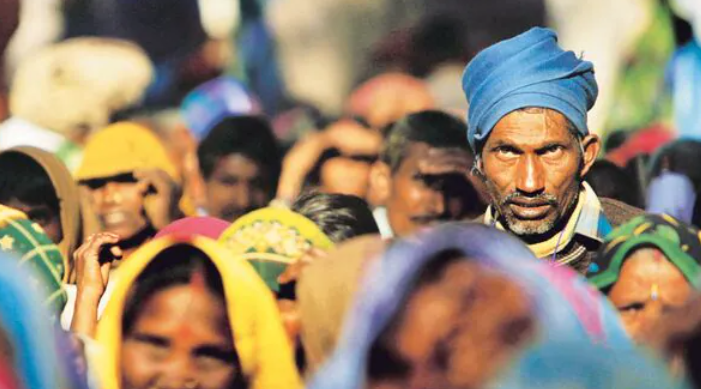Census of India to Begin in 2025 (GS Paper 2, Polity)

Context
- The Indian government has set 2025 as the target year for conducting the much-delayed Census.
- This initiative comes after the original schedule for the 2021 Census was disrupted due to the COVID-19 pandemic.
- Following the census, there will be a delimitation process to adjust the boundaries and number of Lok Sabha seats, which is essential for fair political representation.
About the Census
- The Census of India is a comprehensive enumeration process that gathers vital demographic information across the country.
- This includes data on age, sex, occupation, education, and housing conditions, among other factors.
- The significance of the census lies not just in counting people but in understanding the socio-economic landscape of the nation.
Historical Overview
- First Census: The first synchronous decennial census in India was conducted in 1881 under the stewardship of W.C. Plowden, marking the beginning of systematic population counting in the country.
- Post-Independence Census: The first census after India's independence was carried out in 1951, establishing a tradition of conducting the census in the first year of each decade.
- Legal Framework: The Constitution of India mandates the enumeration process, although the Census of India Act of 1948 does not stipulate a specific schedule for its occurrence.
- Administrative Oversight: The census is conducted by the Office of the Registrar General and Census Commissioner of India, which operates under the Ministry of Home Affairs.
Need for the Census
- Accurate Population Data: Reliable population statistics are essential for planning and managing various national and state projects, including infrastructure development, healthcare provision, and resource allocation.
- Socio-Economic Insights: Census data sheds light on critical socio-economic issues such as literacy rates, income levels, occupational distributions, and living conditions. This information is crucial for identifying social challenges and directing interventions where needed.
- Evaluating Development Progress: Analyzing census data over decades enables the government to evaluate the effectiveness of past policies and programs, thereby informing future strategies and initiatives.
- Environmental Planning: Understanding demographic trends and human settlement patterns is vital for environmental sustainability efforts. The census provides insights that help manage the impact of population growth on resources and the environment.
Benefits of the Census
- Informed Policy Making: Detailed socio-economic data derived from the census informs government policies across various sectors, including education, health, housing, and employment.
- Resource Allocation: Accurate population data ensures that resources are allocated fairly and effectively across different regions, particularly in sectors like public health and education where disparities exist.
- Electoral Reforms and Delimitation: Census data is crucial for delimiting constituencies, directly influencing the representation of different regions in Parliament and State Legislatures. This process ensures that population changes are reflected in political representation.
Way Ahead
Updated Data for Post-COVID Recovery
- Since the last Census was conducted in 2011, the demographic landscape has shifted due to various factors, including migration, economic changes, and the impact of the pandemic.
- Updated data is essential for addressing the evolving needs of the population and planning recovery strategies.
Delimitation Requirements
- The delimitation process, set to follow the 2026 Census, underscores the importance of having accurate, current population data.
- This ensures that constituencies are drawn based on the latest demographic realities, promoting fair representation.
What is Delimitation?
Delimitation is the process of defining the number of seats and the boundaries of territorial constituencies for the Lok Sabha and State Legislative Assemblies. It also includes the allocation of reserved seats for Scheduled Castes (SC) and Scheduled Tribes (ST).
Constitutional Provisions
- Articles 82 and 170: These articles mandate that the number of seats in the Lok Sabha and State Legislative Assemblies, along with their division into constituencies, must be readjusted following each Census. This ensures that representation is aligned with population changes.
- Delimitation Commission: This independent body is established under an act of Parliament to carry out the delimitation process. It examines demographic data and recommends changes to constituency boundaries.
Delimitation in the Past
- Historical Seat Allocation: The number of Lok Sabha seats based on the 1951, 1961, and 1971 Censuses was set at 494, 522, and 543, respectively. However, to encourage population control, the number of seats has been frozen since the 1971 Census.
- 42nd and 84th Amendment Acts: The freeze on seat allocation was initially established through the 42nd Amendment Act until 2000 and subsequently extended by the 84th Amendment Act until 2026. This policy was designed to prevent states with higher population growth rates from gaining more seats.
- Boundary Adjustments: Although the total number of seats has remained unchanged since 1971, the boundaries of constituencies were adjusted based on the 2001 Census. This adjustment will be revisited after the upcoming Census in 2026.
Conclusion
- The 2025 Census is a critical undertaking for India, serving as a cornerstone for effective governance and representation.
- By providing up-to-date demographic data, the Census will facilitate informed decision-making, ensure equitable resource distribution, and support electoral reforms.
- The subsequent delimitation process will further refine the political landscape, ensuring that representation accurately reflects the current demographic realities.
- As India navigates the complexities of a post-COVID world, the insights gained from the Census will be invaluable in shaping policies that promote inclusive growth and development.


